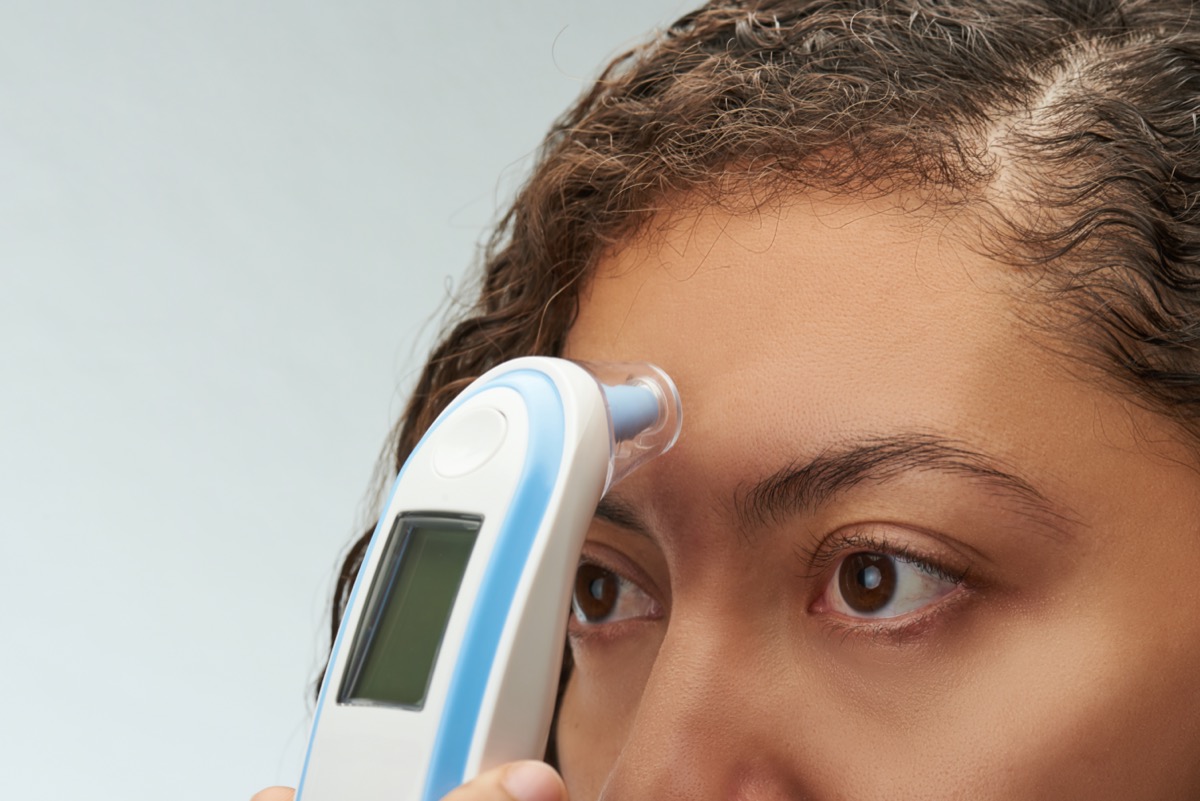According to a June review of research published in PLOS One, out of 24,410 patients whose symptoms were cataloged across 138 studies, 78 percent reported fever as one of their symptoms—making it the most frequently reported coronavirus symptom at the time. The demographics for coronavirus patients have begun to skew younger since the pandemic began—with nearly half of new coronavirus cases in some states spread by people between 18 and 35—and now, their symptoms are changing, too. “Younger people often do come in now—somewhat to our surprise—without fever, and this abdominal pain seems to affect them a little bit more,” William Schaffner, MD, an Infectious Disease professor at Vanderbilt University, told WGN9. Unfortunately, the lack of this formerly prevalent symptom may make it harder to contain the disease in the long-run.ae0fcc31ae342fd3a1346ebb1f342fcb “This virus can do a variety of damage to you, from no symptoms, mild symptoms, [to] a larger collection of symptoms,” explained Schaffner. Those without fever or other common symptoms of the virus could be less likely to take strict precautions against spreading it to others, potentially causing outbreaks to proliferate. According to a July report published in Proceedings of the National Academy of Sciences, up to 48 percent of coronavirus cases are likely to be spread by individuals who are either pre-symptomatic or asymptomatic. RELATED: For more up-to-date information, sign up for our daily newsletter. Some doctors say that, in light of the new information about how often fever is reported in coronavirus cases, medical experts may want to reevaluate how they screen for the virus. “Since fever has only been reported in approximately 30 percent of cases in a study in New York, it is possible that as humans, we seized on fever as a symptom that is easily quantifiable and gives us the reassurance that we either have COVID or not,” says physician Leann Poston, MD, of Invigor Medical. “We feel that we can confidently screen for it, though this reassurance is false.” In the meantime, with fever showing up less frequently as a sign that someone is infected, following CDC-issued guidelines is more important than ever, including washing hands, practicing social distancing, and wearing a mask in public, the latter of which alone may reduce your risk of transmission by up to 65 percent. And if you’re worried you may be infected, 25 Percent of Coronavirus Patients Have This One Disturbing Symptom.
